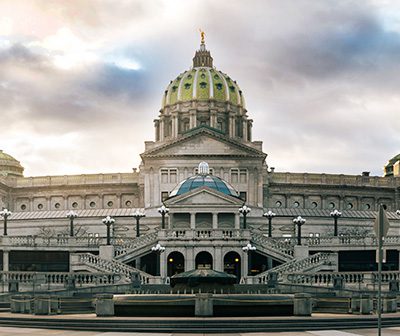“Climate change creates new risks and exacerbates existing vulnerabilities in communities across the United States, presenting growing challenges to human health and safety, quality of life, and the rate of economic growth.” That’s according to the Fourth National Climate Assessment, released the day after Thanksgiving. Mandated by federal law in 1990 to, the U.S. Global Change Research Program (USGCRP) is required deliver a report to Congress and the President no less than every four years.
The assessment comes on the heels of a special report issued by the Intergovernmental Panel on Climate Change that called for limiting global warming to 1.5 degrees C to avert some of the most extreme consequences predicted with the previous 2 degree goal outlined in previous international agreement. The report finds that limiting global warming to 1.5°C would require “rapid and far-reaching” transitions in land, energy, industry, buildings, transport, and cities. (Read a response by Ruth Ivory-Moore, Program Director, Environment and Corporate Social Responsibility for ELCA Advocacy.)
According to the national climate assessment, “Observations collected around the world provide significant, clear, and compelling evidence that global average temperature is much higher, and is rising more rapidly, than anything modern civilization has experienced, with widespread and growing impacts.”
Email LAMPa to join our team of advocates working on climate change in Pennsylvania.
The report also highlights climate change affects and implications by region and state.
Key points in the report for Pennsylvania:
- Mean annual temperature has increased approximately 2°F over the last century. Under a higher emissions pathway, historically unprecedented warming is projected by the end of the 21st century. Extreme heat is of particular concern for densely populated urban areas (such as Philadelphia) where high temperatures and high humidity can cause dangerous heat index values.
- Pennsylvania has experienced a large increase in heavy rain events. Future increases in winter and spring precipitation raise the risk of springtime flooding along rivers and streams.
- Global sea level has risen by about 8 inches since 1880 and is projected to rise another 1 to 4 feet by 2100. Sea level rise will increase the frequency, extent, and severity of coastal flooding along the Philadelphia riverfront, a serious risk in Pennsylvania where the observed sea level rise over the past century has exceeded the global average.
Click here to read the full Pennsylvania summary.
Other key points in the national assessment summary:
- Economy — Without substantial and sustained global mitigation and regional adaptation efforts, climate change is expected to cause growing losses to American infrastructure and property and impede the rate of economic growth over this century.
- Interconnected Impacts — Climate change affects the natural, built, and social systems we rely on individually and through their connections to one another. These interconnected systems are increasingly vulnerable to cascading impacts that are often difficult to predict, threatening essential services within and beyond the Nation’s borders.
- Actions to Reduce Risks — Communities, governments, and businesses are working to reduce risks from and costs associated with climate change by taking action to lower greenhouse gas emissions and implement adaptation strategies. While mitigation and adaptation efforts have expanded substantially in the last four years, they do not yet approach the scale considered necessary to avoid substantial damages to the economy, environment, and human health over the coming decades.
- Water — The quality and quantity of water available for use by people and ecosystems across the country are being affected by climate change, increasing risks and costs to agriculture, energy production, industry, recreation, and the environment.
- Health — Impacts from climate change on extreme weather and climate-related events, air quality, and the transmission of disease through insects and pests, food, and water increasingly threaten the health and well-being of the American people, particularly populations that are already vulnerable.
- Indigenous Peoples — Climate change increasingly threatens Indigenous communities’ livelihoods, economies, health, and cultural identities by disrupting interconnected social, physical, and ecological systems.
- Ecosystems and Ecosystem Services — Ecosystems and the benefits they provide to society are being altered by climate change, and these impacts are projected to continue. Without substantial and sustained reductions in global greenhouse gas emissions, transformative impacts on some ecosystems will occur; some coral reef and sea ice ecosystems are already experiencing such transformational changes.
- Agriculture — Rising temperatures, extreme heat, drought, wildfire on rangelands, and heavy downpours are expected to increasingly disrupt agricultural productivity in the United States. Expected increases in challenges to livestock health, declines in crop yields and quality, and changes in extreme events in the United States and abroad threaten rural livelihoods, sustainable food security, and price stability.
- Infrastructure — Our Nation’s aging and deteriorating infrastructure is further stressed by increases in heavy precipitation events, coastal flooding, heat, wildfires, and other extreme events, as well as changes to average precipitation and temperature. Without adaptation, climate change will continue to degrade infrastructure performance over the rest of the century, with the potential for cascading impacts that threaten our economy, national security, essential services, and health and well-being.
- Oceans and Coasts — Coastal communities and the ecosystems that support them are increasingly threatened by the impacts of climate change. Without significant reductions in global greenhouse gas emissions and regional adaptation measures, many coastal regions will be transformed by the latter part of this century, with impacts affecting other regions and sectors. Even in a future with lower greenhouse gas emissions, many communities are expected to suffer financial impacts as chronic high-tide flooding leads to higher costs and lower property values.
- Tourism and Recreation — Outdoor recreation, tourist economies, and quality of life are reliant on benefits provided by our natural environment that will be degraded by the impacts of climate change in many ways.





